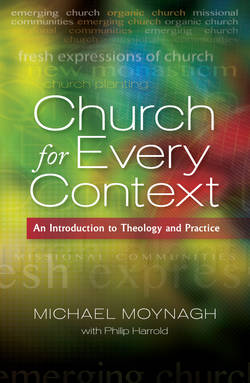Читать книгу Church for Every Context - Michael Moynagh - Страница 96
На сайте Литреса книга снята с продажи.
What lies behind this change?
ОглавлениеFirst, the expressive self reflects post-industrialization, in which subjective opinions are valued more highly (Inglehart and Welzel, 2005, p. 29). This is partly because the post-industrial economy produces unprecedented levels of prosperity, which enhance existential security. Most people now take food, clothing, education and other essentials for granted to an extent never possible before. The proportion of earnings required to secure these necessities has steadily fallen, allowing people to spend more on goals beyond immediate survival. These goals express their subjective selves.
Second, the expressive self is a reaction against an increasingly regulated world. The reaction burst to surface in the 1960s and 1970s. Young people rebelled against the conformity and discipline required by the mass production assembly line and all that supported it, sometimes referred to as Fordism. Postmodernism is ‘the culture of Fordism in crisis’ (Nilges, 2008, p. 30).
The shift away from mass production has not removed the sense of being controlled. If anything, society has become even more organized. The number of organizations has leapt dramatically – registered companies in California expanded fivefold between 1960 and 2001. Organizations are reaching into the informal parts of everyday life – nurseries are replacing childcare at home; the voluntary sector is less informal. Organizations themselves feel more organized – more regulations, more targets and more accountability (Drori, Meyer and Hwang, 2006, pp. 2–7).
On the one hand, work autonomy expands because tasks are too complex to be controlled by the centre. On the other, management standardizes processes to minimize the risk of accidents, substandard performance and wilful damage. Individuals and teams are ruled by tightly defined discretion, targets and frequent appraisals. Bureaucracies have tightened their grip (Grey and Garsten, 2001, p. 238).
Heelas and Woodhead write about the clash between ‘the targeted life’ and the subjective self. Individuals wanting to be themselves use their free time to seek liberation from regimented work and become post-institutional in their attitude to religion.
If they engage with associational forms of the sacred, they are therefore much more likely to be involved with freedom-loving spiritualities of life than with role-enforcing . . . religion. Seeking to escape from externally imposed targets elsewhere in their lives, they will not want more of the same in the sphere of the sacred. (Heelas and Woodhead, 2005, p. 128)
Third, the ‘creative economy’ (Howkins, 2007), in which ideas transform individual talent in novel ways, is producing new opportunities for the expressive self. Initially, growing affluence enabled ordinary people to express their tastes in home furnishings, designer clothes and choice of entertainment to a degree known by the rich alone in previous eras. Now consumers are ‘prosumers’, using new technology to co-produce, co-design, co-innovate, co-distribute and co-consume with others, often across international borders (Chandra and Coviello, 2010).
The academic literature refers to ‘user entrepreneurs’ – individuals or groups of individuals who commercialize a product that they themselves use (Shah and Tripsas, 2007, p. 124). But the trend is wider. Trendwatching.com have dubbed it ‘minipreneurs’: a vast army of consumers turning entrepreneurs, from freelancers to advertising-sponsored bloggers.6 As life becomes more entrepreneurial, church pioneering feels increasingly natural.
